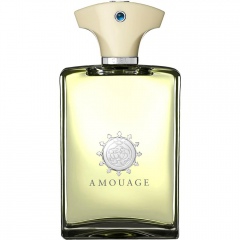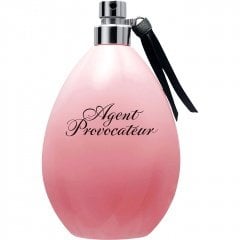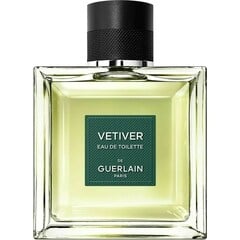
jtd
Reviews
Filter & sort
Floral/Pickle
I once called out Gucci Envy for its use of a “sour” floral accord. I don’t think I was wrong about Envy, but Ciel for Him has made me reconsider the possibility of a viable sour perfume. While this beauty starts with a particularly acrid orange blossom note on top of a velvety flow of incense and sandlewood, it moves in the most remarkable, smooth fashion to a spectacular pickle accord. Remarkable in fact for its smoothness. Floral incense to pickle without a seam in site? Who made this? (And please make more.)
But there is a logic to the progression. The sandlewood and frankincense can underpin just about anything as they are seemingly infinitely rich and complex. The orange blossom floats like drenched gossamer above them. This particularly-perspiring orange blossom then ties you into some piquant culinary/herb notes (cardamom, celery seed, bitter melon?) without any jarring changes. From there, it’s an easy quick-step to pickle. More like pickled fruit (mango, lime, papaya) than vegetable.
Maybe it’s just me. Maybe this is just your typical white floral, pickled citrus, frankincense perfume—one of thousands.
I find Ciel for Him odd, beautiful and so smart. It has the richness of the best from Amouage, but also the who-woulda-thought? inventiveness of an Etat Libre d’Orange or Comme des Garçons perfume. But not their cheek. This inventive use of accord doesn’t have the feel of irony about it. Amouage just gave enough running space to a perfumer who discovered that sandlewood and pickle actually smell right together.
But there is a logic to the progression. The sandlewood and frankincense can underpin just about anything as they are seemingly infinitely rich and complex. The orange blossom floats like drenched gossamer above them. This particularly-perspiring orange blossom then ties you into some piquant culinary/herb notes (cardamom, celery seed, bitter melon?) without any jarring changes. From there, it’s an easy quick-step to pickle. More like pickled fruit (mango, lime, papaya) than vegetable.
Maybe it’s just me. Maybe this is just your typical white floral, pickled citrus, frankincense perfume—one of thousands.
I find Ciel for Him odd, beautiful and so smart. It has the richness of the best from Amouage, but also the who-woulda-thought? inventiveness of an Etat Libre d’Orange or Comme des Garçons perfume. But not their cheek. This inventive use of accord doesn’t have the feel of irony about it. Amouage just gave enough running space to a perfumer who discovered that sandlewood and pickle actually smell right together.
Rose Chypre Revamp
Agent Provocateur is a rose chypre in the 1970s-1980s style. It is gravelly like many rose chypres, but it seems to have a less gigantic rose than that of Lauder's Knowing and Rabanne's La Nuit for instance. AP's rose is rich, but comparatively low-wattage. It joins the patchouli in harmonious fashion and gives AP its oriental style lushness. The different rose changes the tone of AP. It is expansive and takes over the conversation as the genre tends to, but once it does it doesn’t free-associate senselessly and endlessly in cocaine-club fashion (Montana’s Parfum de Peau for example.) AP is as big as the others of the genre, just not as overpowering.
I know many dig AP for its vaunted used-drawers nastiness, but I just get that mineral scent of soil that patchouli can lend to rose. Smells like a garden, really.
I know many dig AP for its vaunted used-drawers nastiness, but I just get that mineral scent of soil that patchouli can lend to rose. Smells like a garden, really.
Vetiver Abstraction
[Note: The Vetiver referred to below is the horizontal(ish) striped frosted glass bottle. The ‘90s’ bottle. ]
Guerlain avoided the Vetiver Trap and chose to make the vetiver root conform to perfumery, not vice versa. Vetiver is a demanding note, and some of the producers of vetiver perfumes of the past 20 years have elected to make it the heart and soul of their perfumes. While there are so many obvious angles of vetiver to emphasize (woody, rootlike, oily, smoky, earthen) they are so imposing that using vetiver in any sufficient quantity in a composition pushes everything else out of its way. A byproduct of the primacy of a note is the same conceptual problem as the solifor in perfumery: why create a representation of vetiver in a perfume when we could wear vetiver essential oil itself?
To focus on a tobacco note seems an obvious way to fall into this trap and wind up with a musty, earthy density. But Guerlain’s Vetiver uses a tart grapefruity bergamot along with licorice and what (I swear to god) seems like aldehydes to make the tobacco bloom, giving Vetiver an effervescent upper register. The real trick is that from the top through the basenotes Vetiver has a dry gin-like almost hissy pervasiveness that is far more durable that this range of notes typically is. The cool quality doesn’t actually feel mentholated or camphorous, but rather sheer and glassy, suggesting that it is cool to the touch.
Coolness seems to have become pronounced over the various reformulations. I know that many are saddened by reformulation. I seem to remember the Guerlain Vetiver a French friend wore in the late 80s and early 90s focused more on the dense, oily vetiver note itself. I know the lightening of a fragrance as a result of reformulation is generally panned, but this cooler, more gin-like Vetiver 1) gives me a wonderful sense of sang-froid in my warm climate and, 2) lifts the register of the tobacco note, making it effectively floral. The lightening doesn’t have to do with dilution, but an increased emphasis on the tenor range of notes.
Prettier than it was, and still pitch-perfect, I find the current Vetiver de Guerlain more appealing than ever, and exceptionally successful in its manipulation of a difficult botanical note. The current Vetiver, more than earlier versions, uses its eponymous note in the same manner that Chanel No 5 makes a floral perfume with jasmine: it makes a balanced abstraction that smells of vetiver but does not smell like vetiver.
(I’ve been wearing reformulated Guerlain Vetiver in the old-is-new-again rectangular bottle with the silver cap. My overview of it is that it’s nicely made, smells more like the ‘original’ and smells more like vetiver root but less like tobacco and aldehydes. I prefer my ‘90s’ Vetiver for its abstraction, but I might be in the minority. My only strike against the new is that it fades rather quickly, something I don’t remember any previous version doing.)
Guerlain avoided the Vetiver Trap and chose to make the vetiver root conform to perfumery, not vice versa. Vetiver is a demanding note, and some of the producers of vetiver perfumes of the past 20 years have elected to make it the heart and soul of their perfumes. While there are so many obvious angles of vetiver to emphasize (woody, rootlike, oily, smoky, earthen) they are so imposing that using vetiver in any sufficient quantity in a composition pushes everything else out of its way. A byproduct of the primacy of a note is the same conceptual problem as the solifor in perfumery: why create a representation of vetiver in a perfume when we could wear vetiver essential oil itself?
To focus on a tobacco note seems an obvious way to fall into this trap and wind up with a musty, earthy density. But Guerlain’s Vetiver uses a tart grapefruity bergamot along with licorice and what (I swear to god) seems like aldehydes to make the tobacco bloom, giving Vetiver an effervescent upper register. The real trick is that from the top through the basenotes Vetiver has a dry gin-like almost hissy pervasiveness that is far more durable that this range of notes typically is. The cool quality doesn’t actually feel mentholated or camphorous, but rather sheer and glassy, suggesting that it is cool to the touch.
Coolness seems to have become pronounced over the various reformulations. I know that many are saddened by reformulation. I seem to remember the Guerlain Vetiver a French friend wore in the late 80s and early 90s focused more on the dense, oily vetiver note itself. I know the lightening of a fragrance as a result of reformulation is generally panned, but this cooler, more gin-like Vetiver 1) gives me a wonderful sense of sang-froid in my warm climate and, 2) lifts the register of the tobacco note, making it effectively floral. The lightening doesn’t have to do with dilution, but an increased emphasis on the tenor range of notes.
Prettier than it was, and still pitch-perfect, I find the current Vetiver de Guerlain more appealing than ever, and exceptionally successful in its manipulation of a difficult botanical note. The current Vetiver, more than earlier versions, uses its eponymous note in the same manner that Chanel No 5 makes a floral perfume with jasmine: it makes a balanced abstraction that smells of vetiver but does not smell like vetiver.
(I’ve been wearing reformulated Guerlain Vetiver in the old-is-new-again rectangular bottle with the silver cap. My overview of it is that it’s nicely made, smells more like the ‘original’ and smells more like vetiver root but less like tobacco and aldehydes. I prefer my ‘90s’ Vetiver for its abstraction, but I might be in the minority. My only strike against the new is that it fades rather quickly, something I don’t remember any previous version doing.)
Black Swan
I’m a great fan of Eau Sauvage. I don’t have a recent bottle and am not sure what shape the current model is in. Mine is from 2001-2002, I’d guess. It’s floral, it’s pretty, it’s old-school fresh. It’s bright and inherently shiny.
There’s now Eau Sauvage Parfum, the Black Swan. It’s the dense, shadowy, witching-hour sibling of the original. Others have said they don’t smell any Eau Sauvage in the ESP, and although I understand why they say that, I do. A trace of the original is there, but the expansiveness is replaced by aloofness. Instead of the buoyant floral sillage of Eau Sauvage, ESP’s wake skates away from you like a demonstration of inertia. You stay put as she slides away from you saying. “You, sit. I’ll take care of this.”
I had a strong sense of déjà vu on sniffing ESP, and a few minutes into trying it, I knew why. Eau Sauvage Parfum smells remarkably similar to Parfums de Nicolai’s Vie de Chateau Intense, nearly Calandre/Rive Gauche similar. In my review of Vie de Chateau last year I mentioned the original Eau Sauvage, writing, “compare the first sniff of each side by side!” I don’t see this similarity as plagiarism, just as I didn’t mean to imply that Vie de Chateau was a copy of the original Eau Sauvage. More likely it’s kismet and a similar outcome from talented people investigating a similar set of ideas. I’d go so far as to say that Eau Sauvage Parfum is one of the best, most thoroughly executed mainstream releases I’ve smelled in years. It is definitive, it smells exceptionally good, and it demonstrates a classical perfume’s virtues of coherence and development. Taking Eau Sauvage, an icon, as a starting place, thinking broadly and in the end giving us a smart gem of a perfume---this is what I want from a flanker.
I’ve seen ESP called a vetiver fragrance, a myrrh fragrance. I find that the notes of hay & tobacco, the moist warmth/coolness fairly shout coumarin. Just as the swan is both ends of the spectrum in one entity, Eau Sauvage Parfum (like Vie de Chateau) comes off as a fougère/chypres hybrid taking the best form each genre.
Nice touch, the dark bottle. Brilliant magnetic cap
There’s now Eau Sauvage Parfum, the Black Swan. It’s the dense, shadowy, witching-hour sibling of the original. Others have said they don’t smell any Eau Sauvage in the ESP, and although I understand why they say that, I do. A trace of the original is there, but the expansiveness is replaced by aloofness. Instead of the buoyant floral sillage of Eau Sauvage, ESP’s wake skates away from you like a demonstration of inertia. You stay put as she slides away from you saying. “You, sit. I’ll take care of this.”
I had a strong sense of déjà vu on sniffing ESP, and a few minutes into trying it, I knew why. Eau Sauvage Parfum smells remarkably similar to Parfums de Nicolai’s Vie de Chateau Intense, nearly Calandre/Rive Gauche similar. In my review of Vie de Chateau last year I mentioned the original Eau Sauvage, writing, “compare the first sniff of each side by side!” I don’t see this similarity as plagiarism, just as I didn’t mean to imply that Vie de Chateau was a copy of the original Eau Sauvage. More likely it’s kismet and a similar outcome from talented people investigating a similar set of ideas. I’d go so far as to say that Eau Sauvage Parfum is one of the best, most thoroughly executed mainstream releases I’ve smelled in years. It is definitive, it smells exceptionally good, and it demonstrates a classical perfume’s virtues of coherence and development. Taking Eau Sauvage, an icon, as a starting place, thinking broadly and in the end giving us a smart gem of a perfume---this is what I want from a flanker.
I’ve seen ESP called a vetiver fragrance, a myrrh fragrance. I find that the notes of hay & tobacco, the moist warmth/coolness fairly shout coumarin. Just as the swan is both ends of the spectrum in one entity, Eau Sauvage Parfum (like Vie de Chateau) comes off as a fougère/chypres hybrid taking the best form each genre.
Nice touch, the dark bottle. Brilliant magnetic cap
2 Comments

 jtd
jtd


